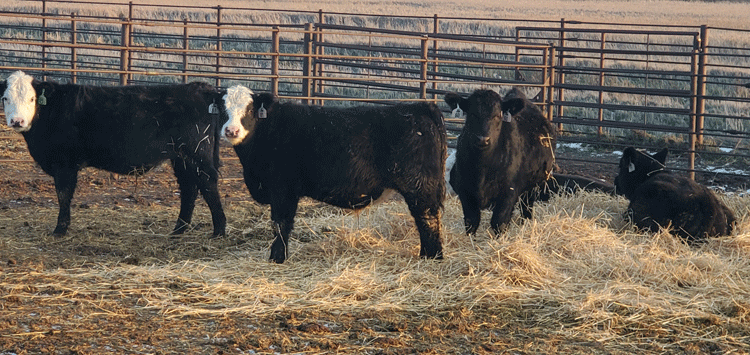“While the northern Great Plains drought of 2021 has affected feed availability regionally, the national price of feed has risen compared to last year,” says Karl Hoppe, Extension livestock systems specialist at the North Dakota State University (NDSU) Carrington Research Extension Center.
Backgrounding is the term used when feeding calves after weaning to allow growth, improve animal health and delay marketing. Usually, backgrounding is done during the cold winter months and does not incorporate grazing.
“Budgets for backgrounding are the most favorable profit-wise that I have seen in the past four years,” says Bryon Parman, NDSU Extension agricultural finance specialist.
Budgets for growing calves at higher rates of gain always have a lower cost per pound gain, and this year budgets for growing heifers have the most profitable projections, says Parman.
“Nationally, the cow herd is decreasing in numbers, and better cattle prices more than likely will be seen in the future,” says Tim Petry, NDSU Extension marketing specialist. “Some of that already is occurring in the fed cattle market.”
While delayed marketing and adding weight drives backgrounding decisions, keeping cattle immunized and healthy is an important aspect of backgrounding cattle.
“Getting over the stress of weaning and allowing vaccinations to develop immunity, plus providing booster vaccinations, adds value to calves,” says Gerry Stokka, NDSU Extension veterinarian. “The period of weaning is a very stressful time for a calf and providing a comfortable environment, good feed and time to adjust makes backgrounding a good management process.”
Starting calves on feed is a big change from eating grass and nursing. Most backgrounding rations start with hay in the feedbunk, and then grains, coproducts and silage are gradually introduced into the ration, says Zac Carlson, NDSU Extension beef cattle specialist.
“These ‘step up’ rations allow calves to adapt to the new feeds,” says Carlson. “Also, silage and distiller grains have unique smells and tastes that are quite different than grass. Calves can be reluctant to eat something new. Starting calves on feed is very important for the health of the animal.”
To discuss these options in more detail, NDSU Extension created a video series that can be watched at bit.ly/NDSUbackgroundingcattle.
The video series has five videos on backgrounding calves:
- Calf Budgets for fall 2021 - Parmon
- Calf health issues for fall 2021 - Stokka
- Calf market outlook - Petry
- Feeds, alternative feeds and cost of gain - Hoppe
- Rations for backgrounding - Carlson














